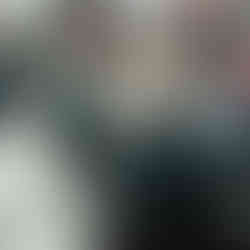Geometry class
- Montgomery
- Apr 8, 2019
- 2 min read
In geometry class, students derived the surface area and volume for cubes and rectangular prisms of various sizes. The formulas for these calculations were introduced in new functional notation and used as examples of comparing and simplifying expressions to make a new function that makes computing the ratio between two-dimensional and three dimensional measurements easier. Graphing and reflecting these functions served as an introduction to the visual representation of basic quadratic and polynomial functions as well as an application of transformations. There was an additional task involving translation of rectangular bases thrown in for good measure. Finally, the honors classes hosted a calculus student who quickly showed them it was possible to calculate the area between the curves of the surface area and volume functions using simple techniques they could learn in future years of math.
On alternate days students worked on a simple design project for making display stands. Mr. Roberts provided a template in Adobe Illustrator on which students created individual designs. Each design was required to represent several concepts and vocabulary terms through lines and images for laser cutting, laser engraving, or raster etching on one display stand panel. Students then had to actively demonstrate two-dimensional transformations, including translation, reflection, rotation, and dilation, to replicate their design onto the remaining panels to complete one large and one small stand. Students uploaded their results to a new laser share drive on the school’s network that is connected to the server in the overflow space used to print on the laser cutter/engraver machines.
These two different activities support different but important aspects of the birdhouse project. As students design their houses, they need to create enough space inside for the birds to live (volume) while being mindful of the minimal amount of material it will take to create the panels of their final structure (surface area). While the designs are not limited to cubes or rectangular prisms, many will likely start from these shapes and the resulting calculations would at least approximate more complicated forms. The display stands will be created using the same laser cutting/engraving machines that will be used to create the birdhouses, with a common design tool and process. Students need to know how to create the elements of a design that the laser cutters will recognize: lines of specific width using specific colors for cutting, engraving, or rastering. Since we have never done a large-scale project before with these high-tech manufacturing tools, it is important to test our approach with a smaller scale project. We are already discovering pitfalls we can now avoid when final production of the birdhouses begins a few short weeks from now.
.png)











Comments